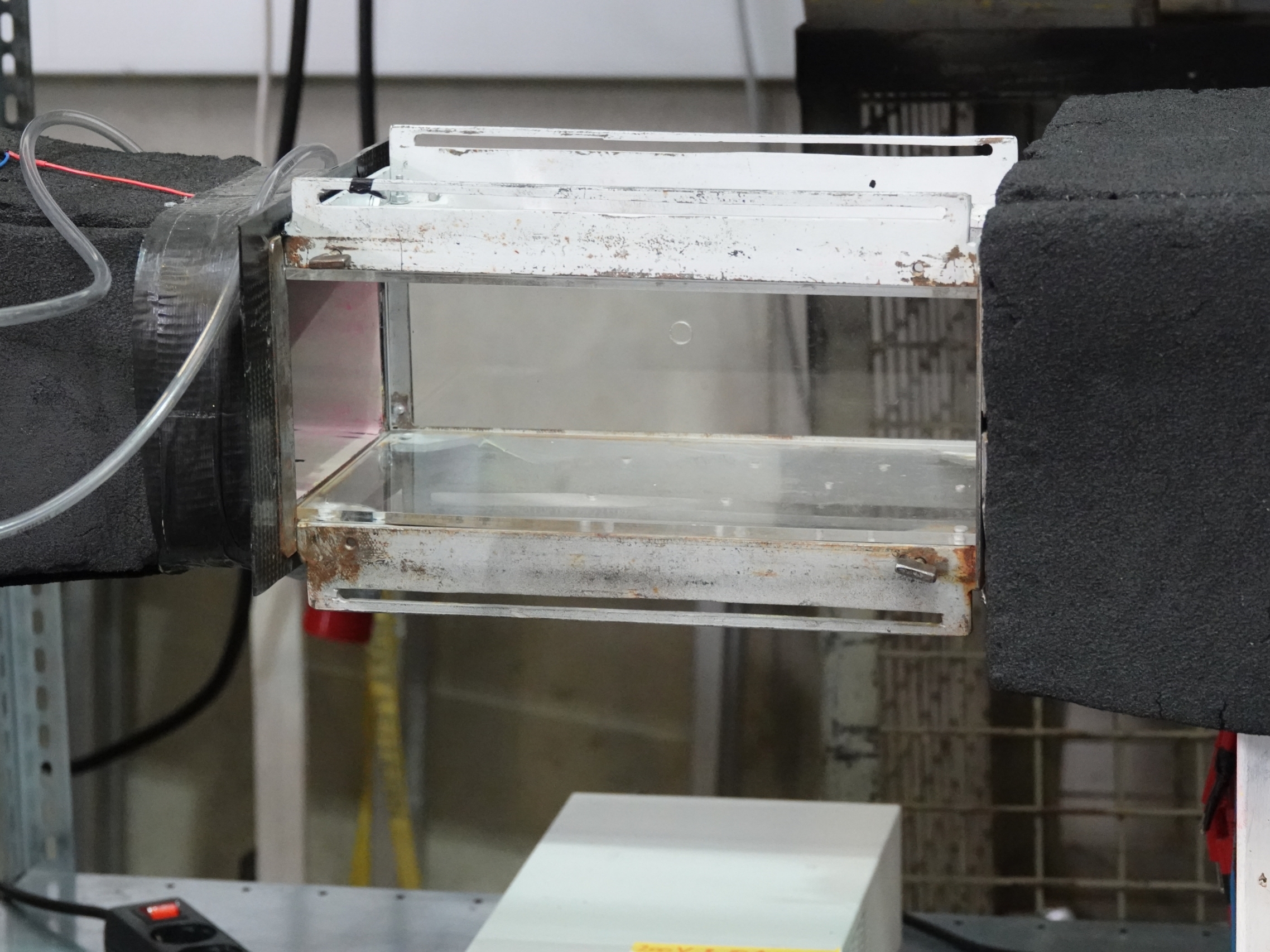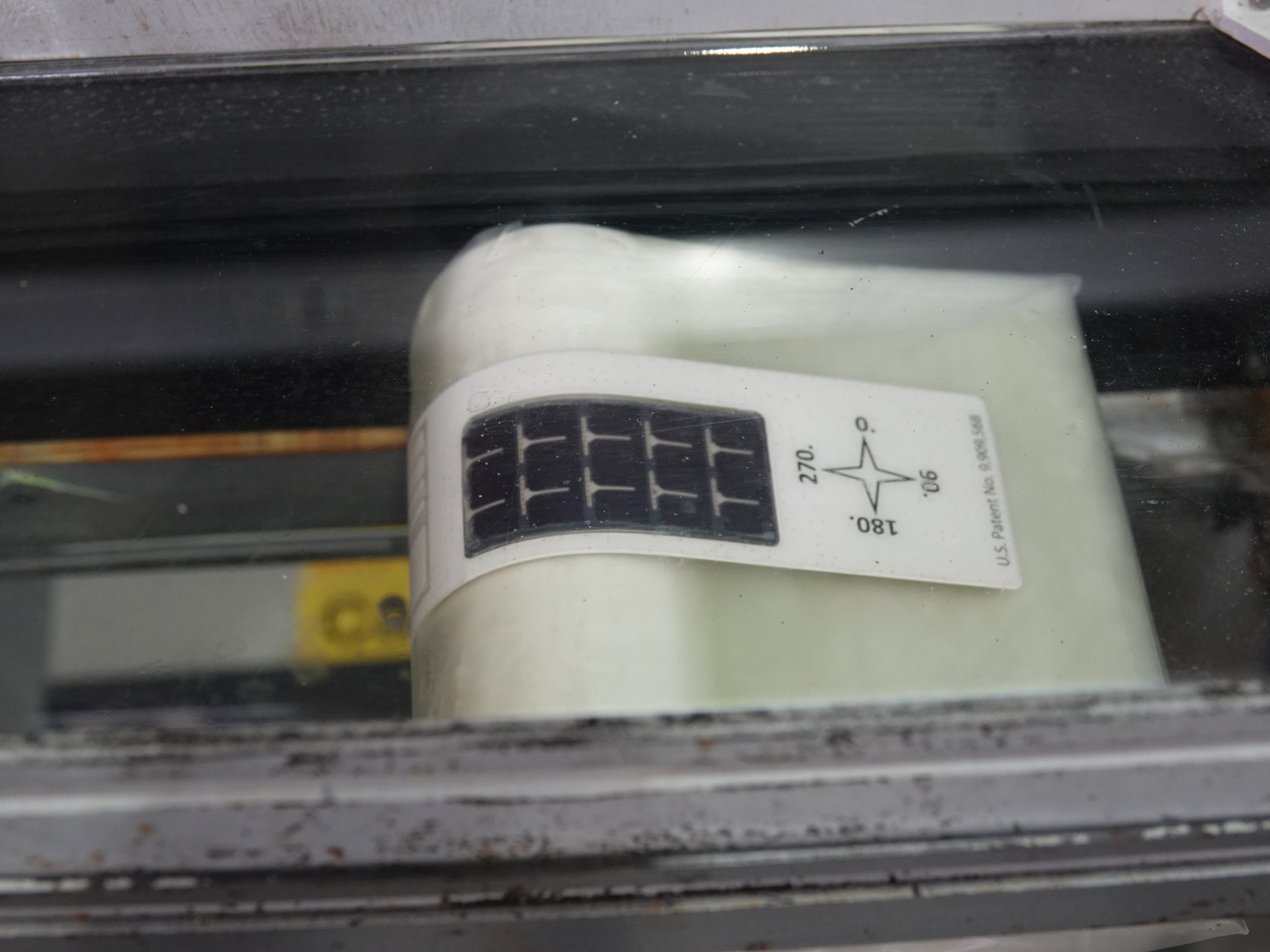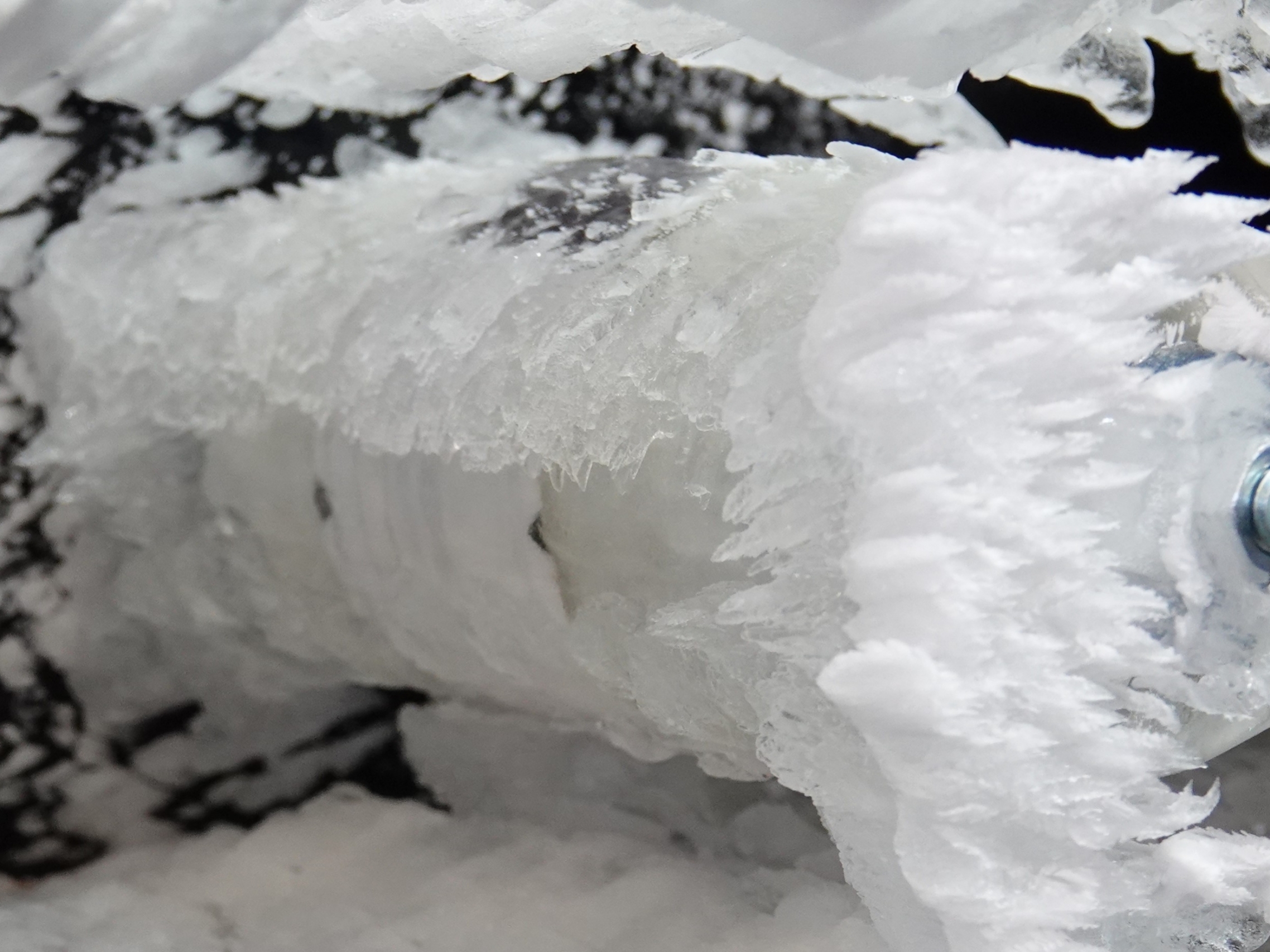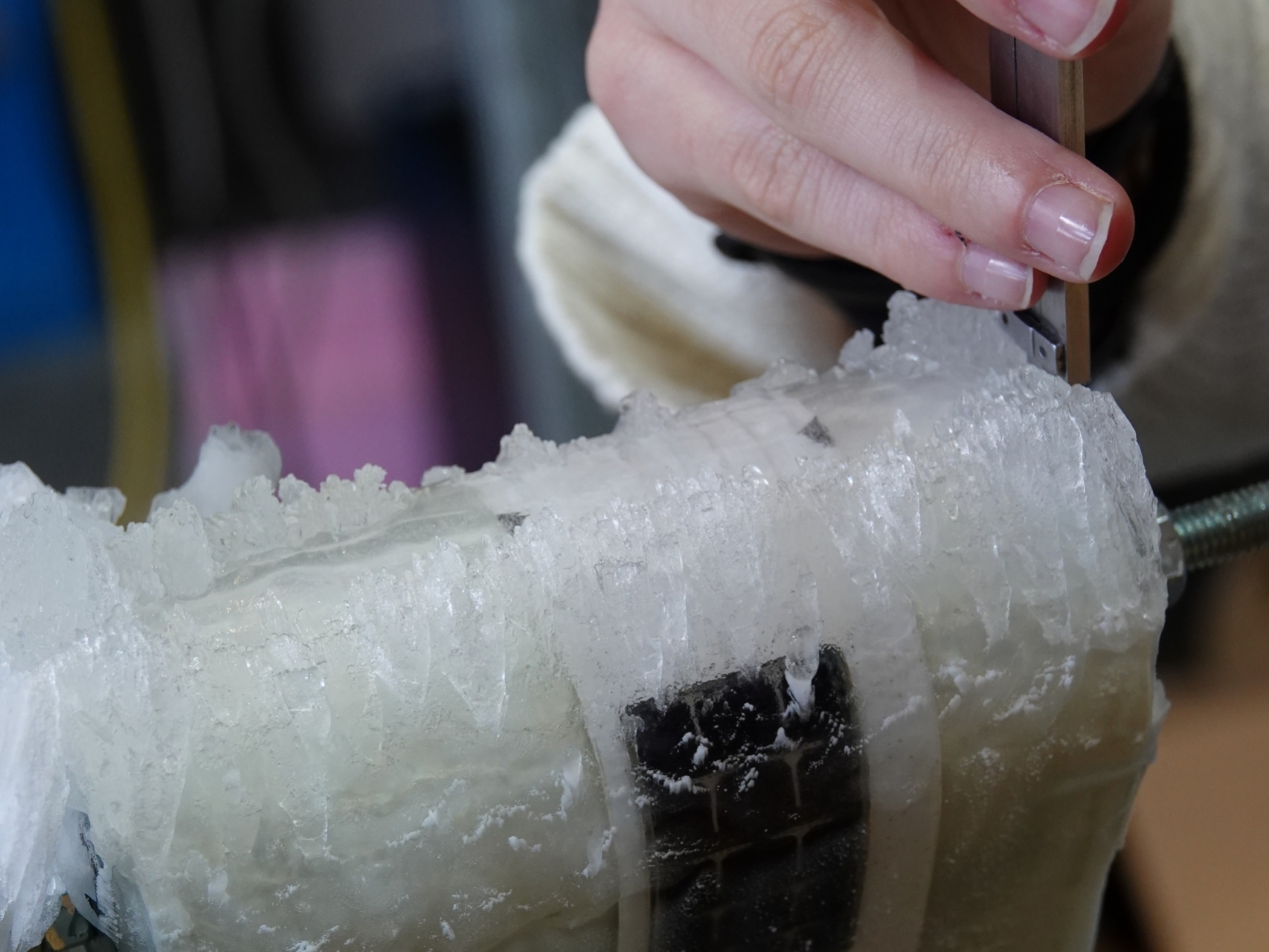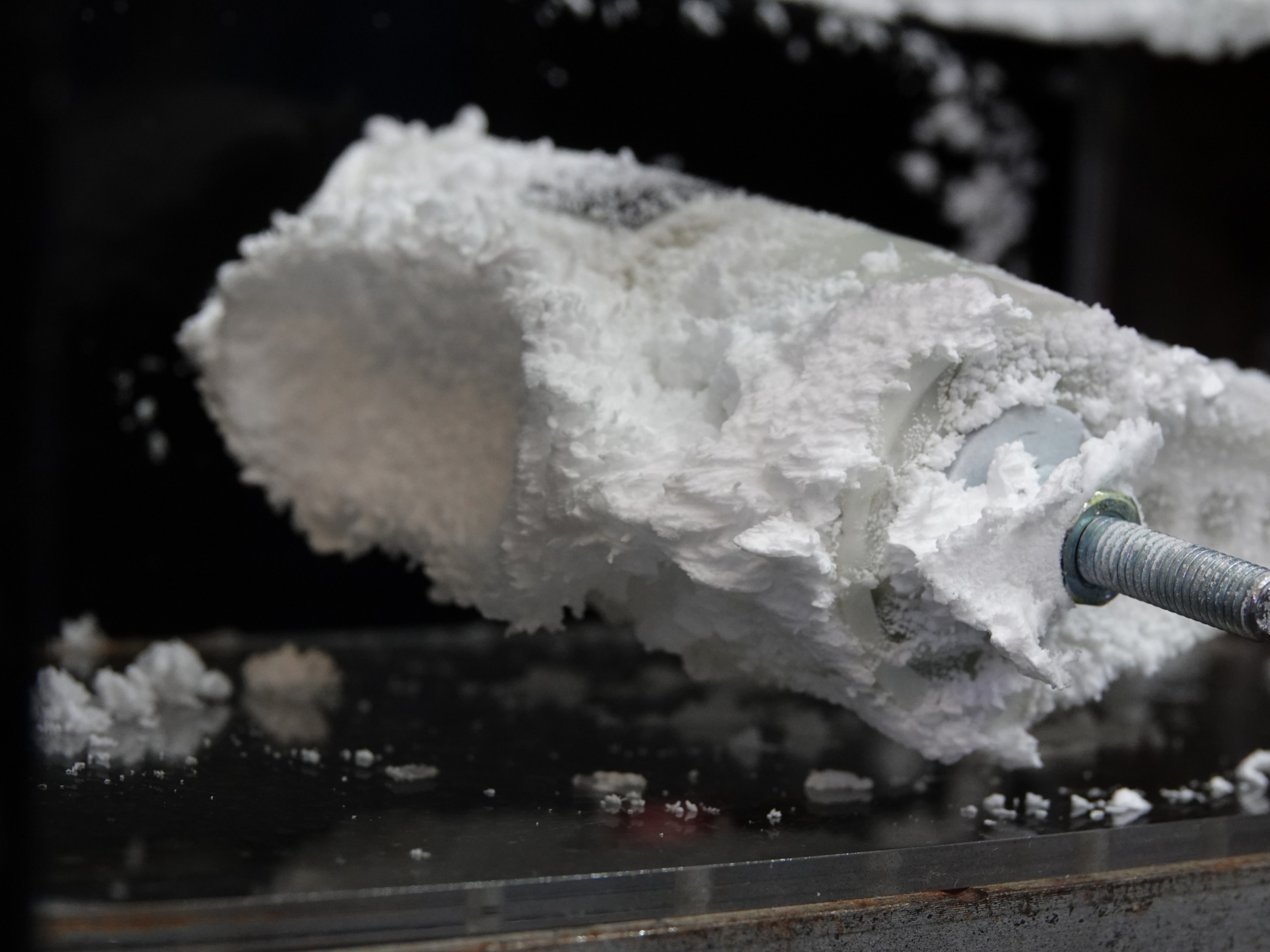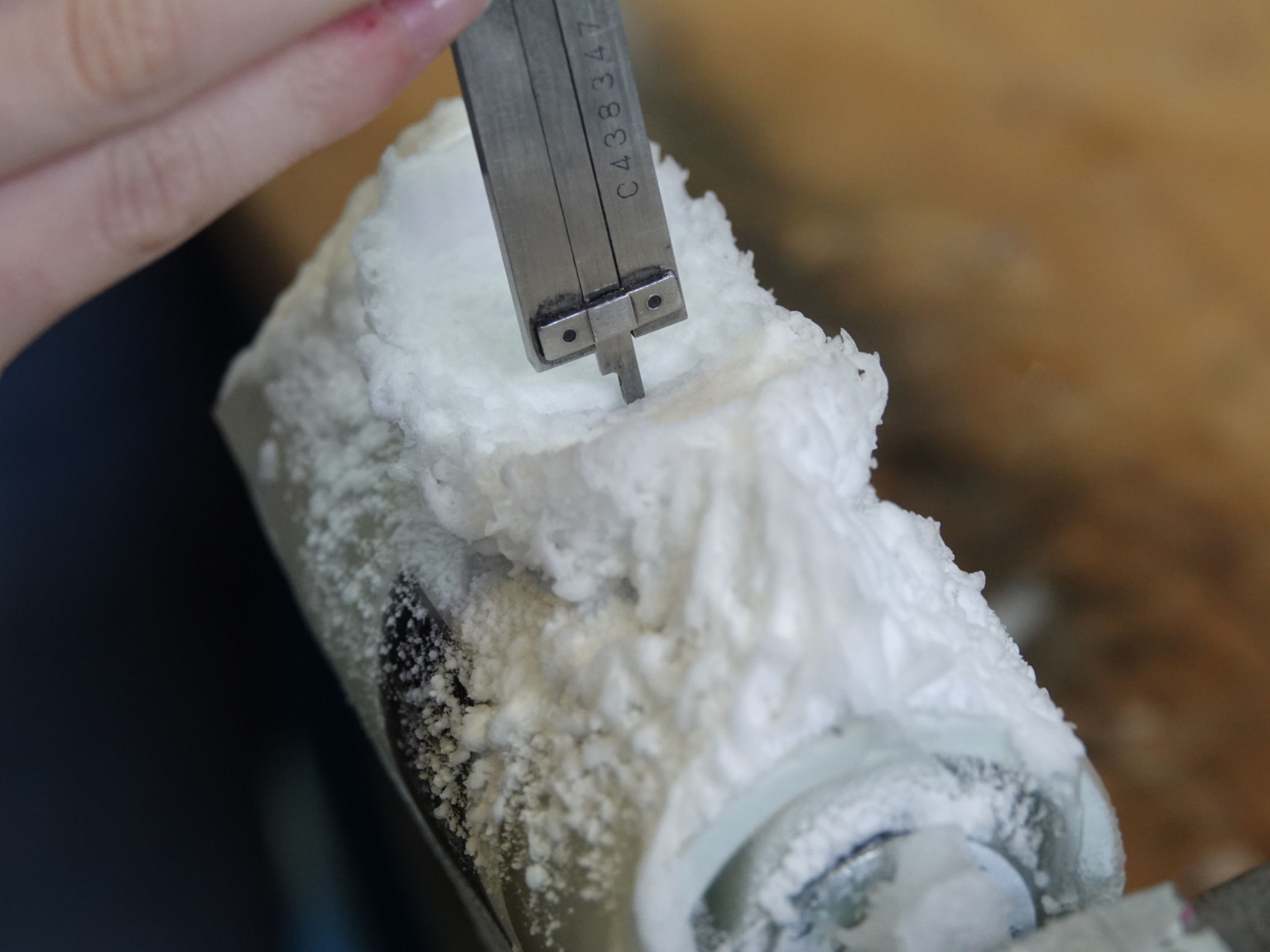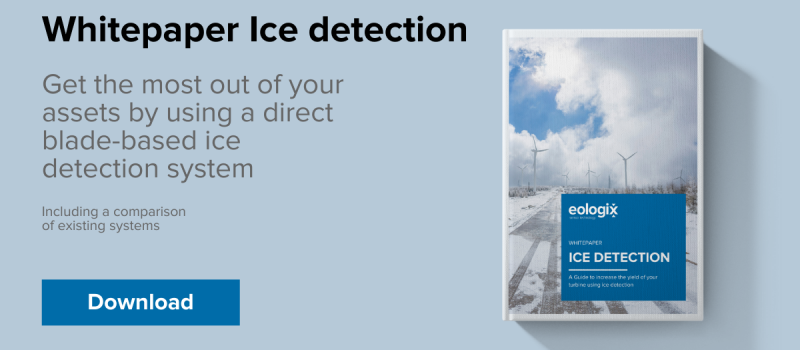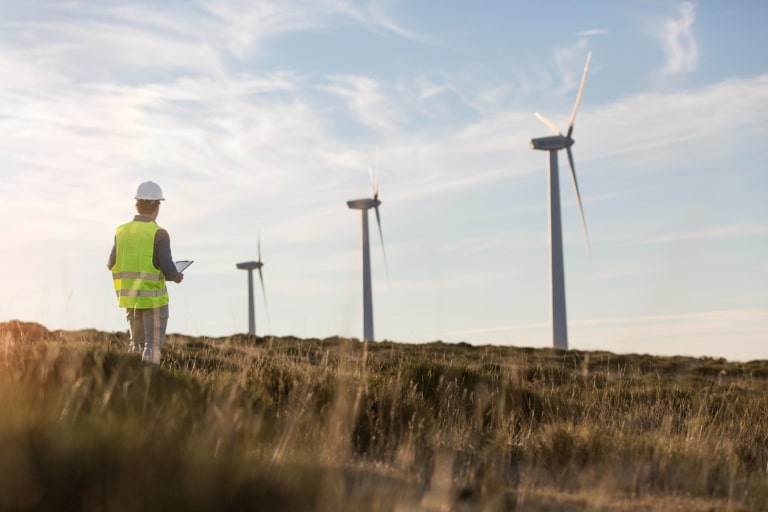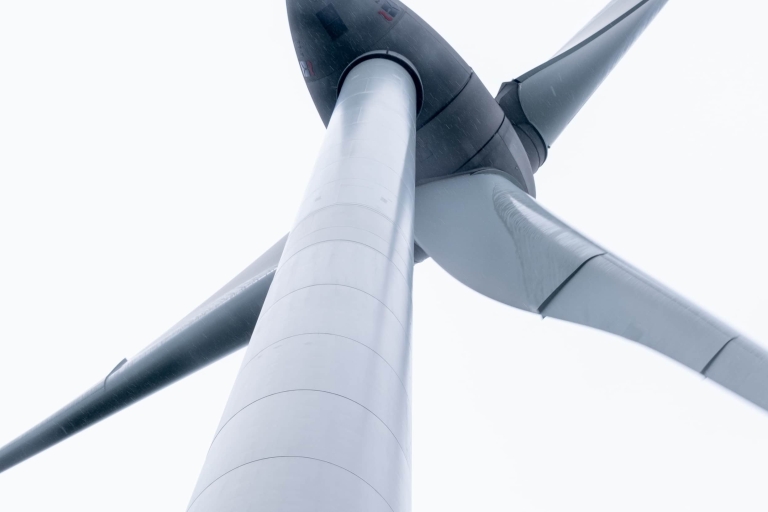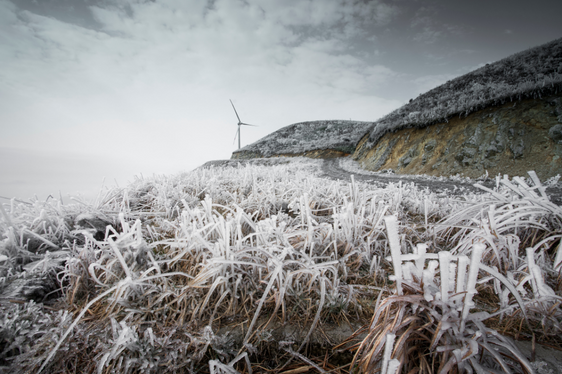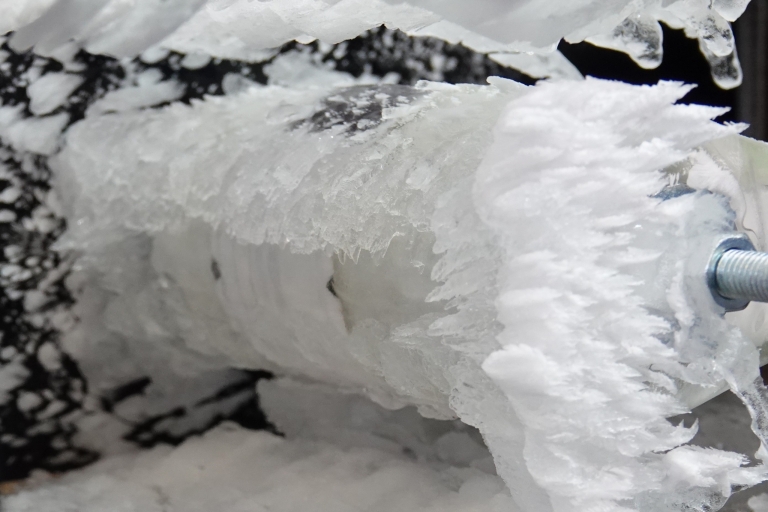TECHNOLOGY | 5 MIN TO READ
Hoarfrost, rime ice and glaze ice in wind turbine operation
You can find out how icing occurs, which phases of icing there are and what it actually depends on in our white paper: Optimize your turbine with the help of ice detection

Hoarfrost
Hoarfrost is a form of fog-frost deposition, usually thin, fragile ice needles or scales that adhere only loosely to objects and are formed almost exclusively by sublimation. The prerequisites for the formation of frost are high humidity (around 90 % or more), weak wind and temperature values generally below minus 8 °C.
Rime ice
RIme ice is a solid precipitation that forms mainly at high wind speeds and an air temperature of typically -2 to -10 degrees Celcius. This ice forms from supercooled fog water droplets and forms on surfaces, typically against the wind direction. The formed ice layer of grey-white granular particles have a sponge-like appearance and are quite loose compared to solid glaze ice.
Rime ice is characterised by the fact that it has no crystalline structures and includes a large number of air bubbles in its structure. The partial melting and refreezing of the particles causes them to stick together to varying degrees, depending on the prevailing temperature conditions.
Glaze ice
Smooth, compact, transparent and very firmly adhering ice deposit of indeterminate shape and irregular surface. Glaze ice is formed at air temperatures between 0 and minus 3 °C by slow freezing of supercooled mist droplets on objects. Glaze ice can grow into extremely heavy ice loads.
Types of icing on rotor blades and their dangers
In principle, all three types of icing, namely hoarfrost, rime ice and glaze ice can occur on rotor blades.
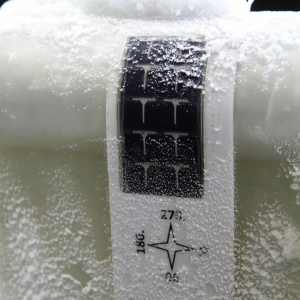
Rime ice
In low-lying countries, ice layers are usually very thin and light and therefore do not represent any danger. At high altitudes, however, wind turbines are operated within the cloud cover, so that layers of rime ice can very often become very dense and hard and can be 10 cm or more thick at the leading edge of the rotor blades. Such deposits of rime ice pose a danger during operation of the wind turbine.
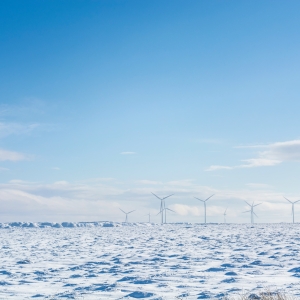
Hoarfrost on rotor blades
Only poses a safety hazard from a very high density (several cm). Due to its low density and large surface area, it detaches from the rotor blades like snowfall.

Glaze ice
Due to the very high density and the possible layer thickness of several centimetres, ice accumulations in the form of glaze ice pose a danger during operation of the wind turbine.
Dropped ice fragments from iced rotor blades have already been found at a distance of more than 100m from wind turbines. Therefore, appropriate safety measures must be taken against ice throw and ice fall.
Ice accumulation on rotor blades represents a potential risk for the operation of a wind turbine
- Falling fragments of ice from the rotor blades can pose a safety risk
- Danger from icing depends, among other things, on the type of icing and the thickness of the ice
- Iced rotor blades can significantly minimise the performance of the wind turbine and cause increased vibrations
eologix systems regarding types of icing
- eologix systems measure ice and surface temperature at each sensor directly on the rotor blade surface
- Differentiation between types of icing possible – enables shut-down only in case of safety-relevant icing (in independent tests, on average 2.5 times fewer downtimes compared to other rotor blade-based ice detection systems)
eologix sensors in use in the Climate Wind Tunnel at the FH Joanneum
The best way to make good decisions is to base them on solid knowledge. That’s why our products undergo a wide range of tests before we introduce them to the market.
- eologix ice detection enables the classification of the surface condition in five different levels, that means that we also measure the ice thickness on your rotor blades. The following figure shows an example of this for glaze ice.
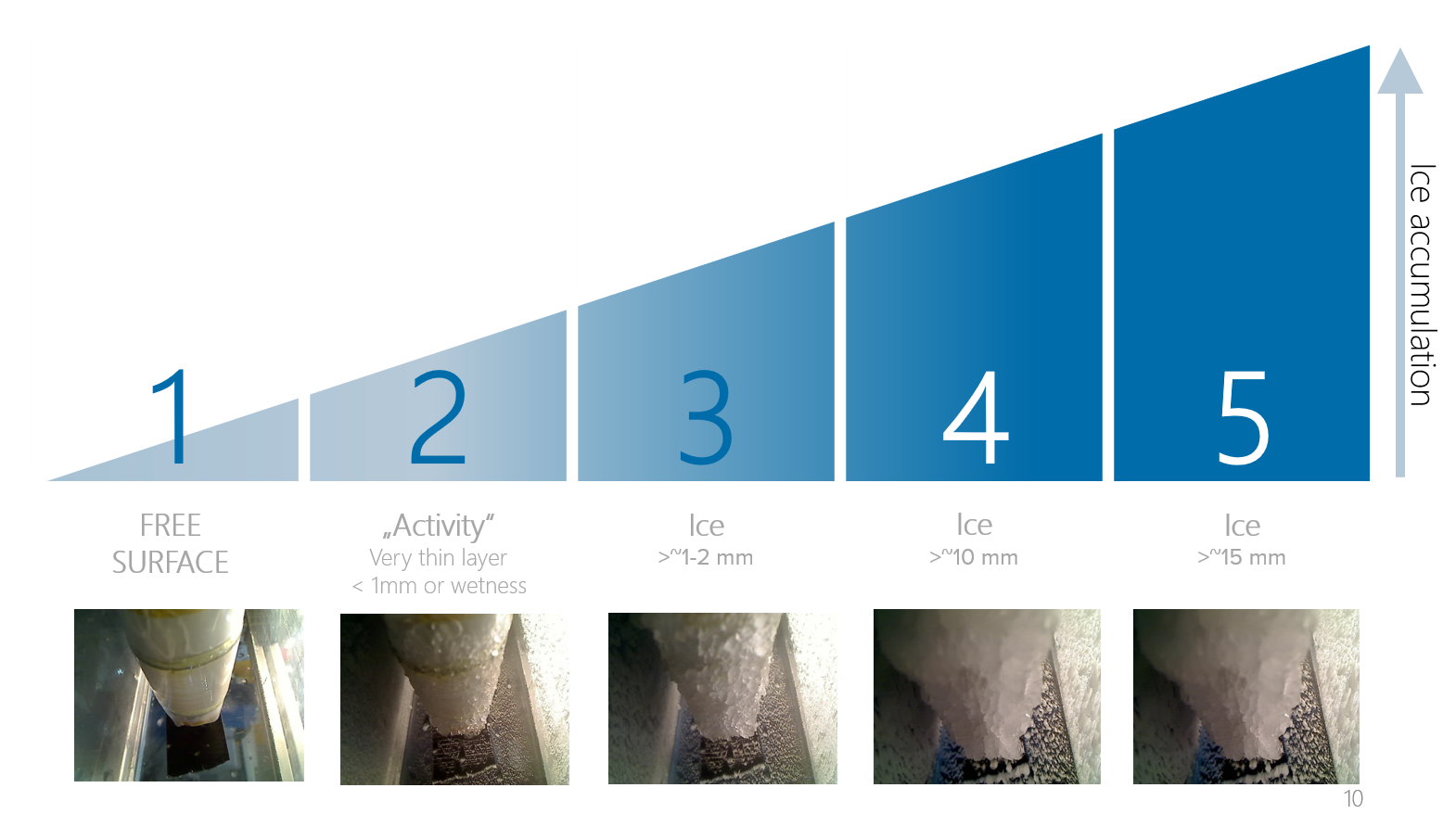
- Compared to other blade-based systems, eologix ranks, among others, as the safest system (highest availability in independent tests), with the lowest downtimes and at the same time the highest sensitivity of these four tested blade-based systems available on the market – read more here
- Deutscher Wetterdienst (Hrsg.), Nebelfrostablagerungen, abgerufen unter: https://www.dwd.de/DE/service/lexikon/Functions/glossar.html?lv2=101812&lv3=101872
- Wikipedia (Hrsg.): Raueis, abgerufen unter: https://de.wikipedia.org/wiki/Raueis
- Hohenlohekreis.de (Hrsg.): Angaben zum Schutz vor Eisabwurf Vereisungsgefahren und Enteisungssysteme, 2017
- Deutscher Wetterdienst (Hrsg.), Raureif, Raueis, Raufrost – Was denn nun?!, abgerufen unter: https://www.dwd.de/DE/wetter/thema_des_tages/2014/12/6.html

